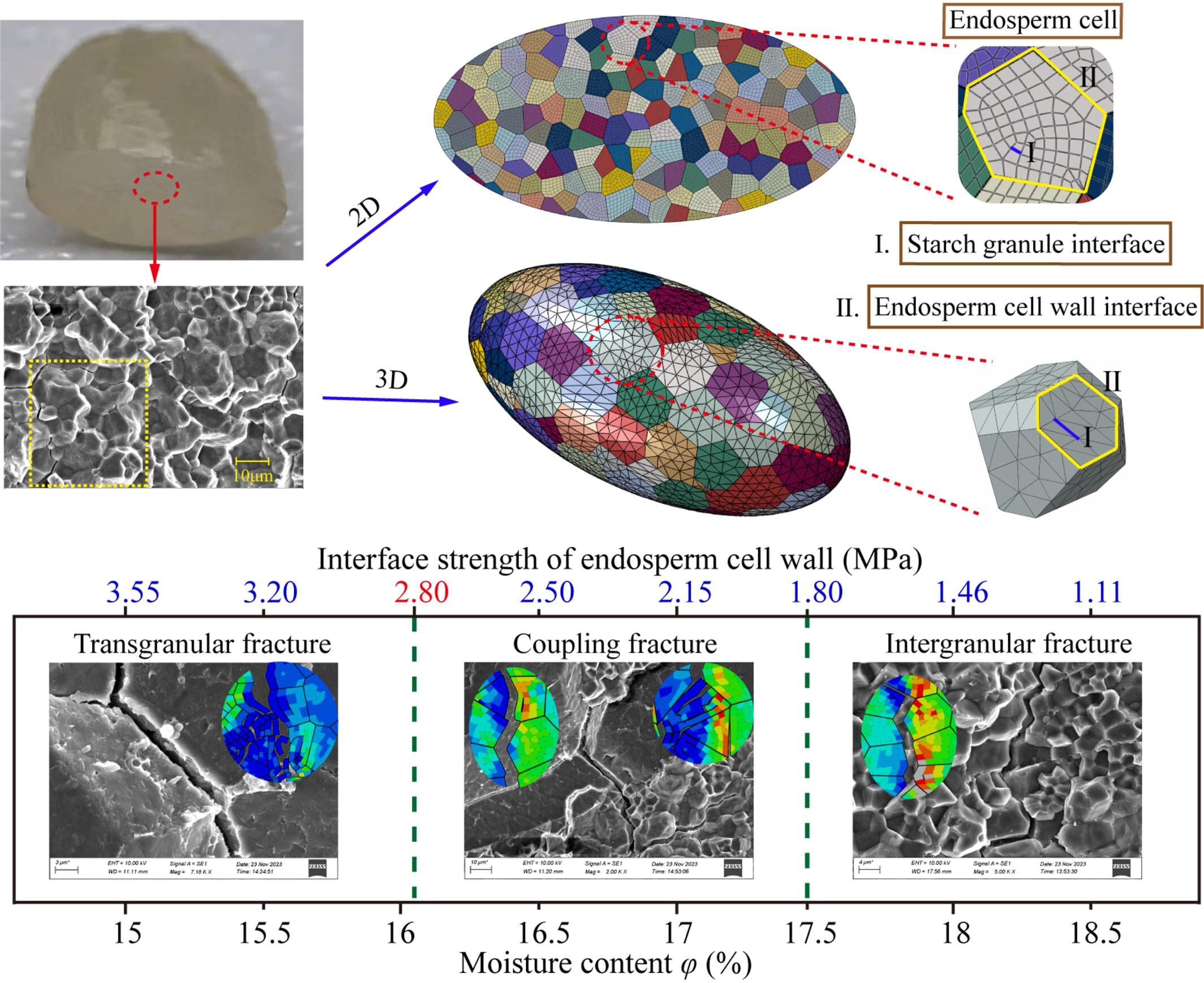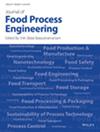Moisture content-dependent mechanical behaviors of rice by experiments and composite models in finite element simulation
Abstract
To reduce the crushing rate and improve the yield of rice during the milling process, it is significant from a fundamental standpoint to understand the mechanical behaviors of rice under external loads. In this paper, the mechanical properties and fracture morphologies of rice with various moisture contents have been analyzed in detail by experiments and the finite-element (FE) method. In FE simulations, two-dimensional (2D) and three-dimensional (3D) composite models have been established with the cohesive zone model characterizing the interface strength. The results show that the moisture content determines the endosperm cell wall interface strength, and a linear relationship between the interface strength and moisture content has been obtained. In particular, three fracture patterns of brown rice are observed by the competition between the interface strength of starch granule and endosperm cell wall interface strength. Good agreements between FE predictions and experimental results indicate that the combination of the 2D and 3D composite models with the cohesive zone model can provide accurate predictions of the fracture behaviors of brown rice. This investigation should be of great help for understanding the moisture content-dependent compression and impact behaviors of rice.
Practical applications
Brown rice can be obtained by removing the husk through a hulling machine. During these processes, external loads, such as compression and impact, will damage the microstructure of brown rice, which results in a loss rate as high as 25%. Understanding the mechanical properties of brown rice with different moisture contents will be of great help in designing the equipment used in rice processing operations and extending the yield of polished rice.


 求助内容:
求助内容: 应助结果提醒方式:
应助结果提醒方式:


